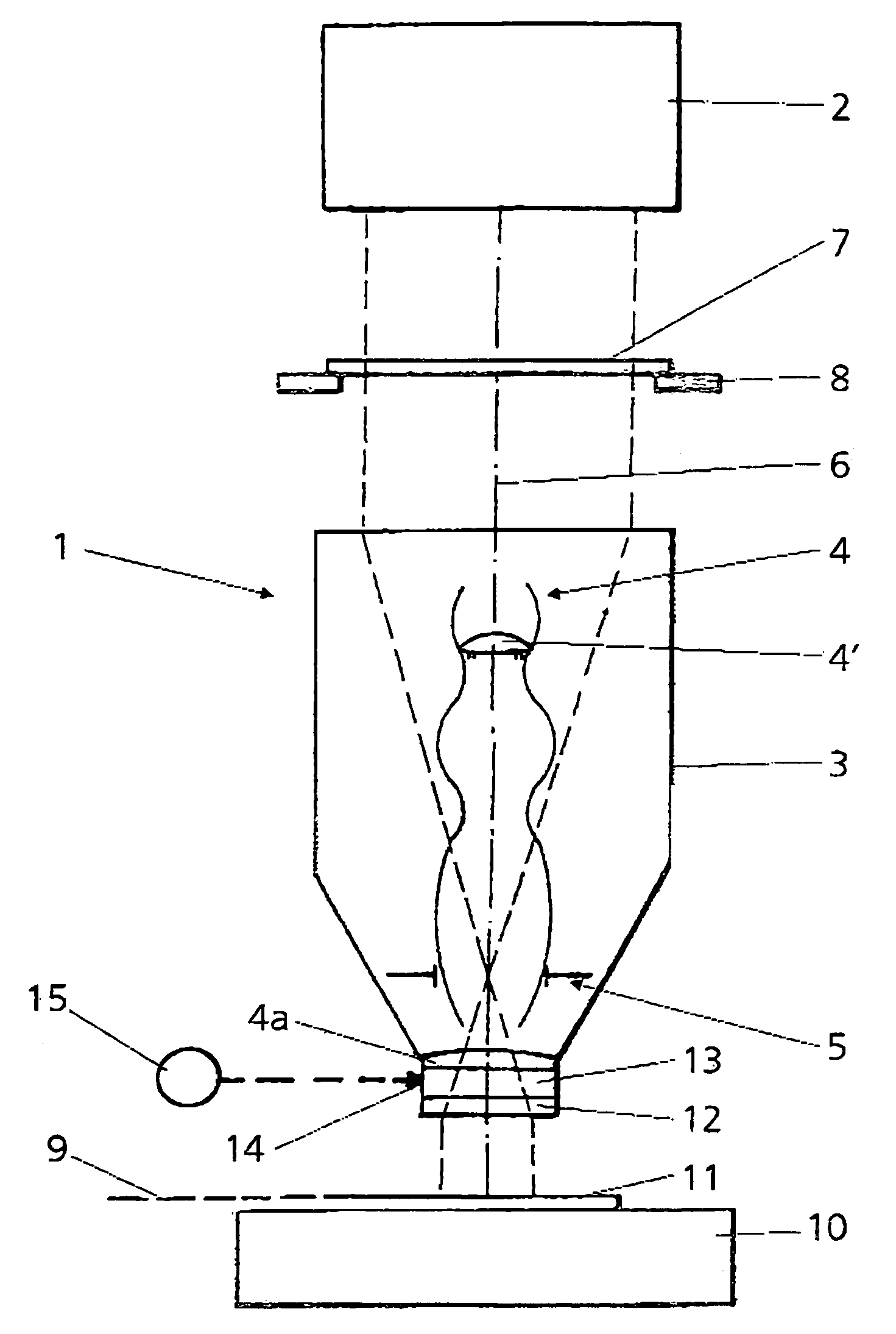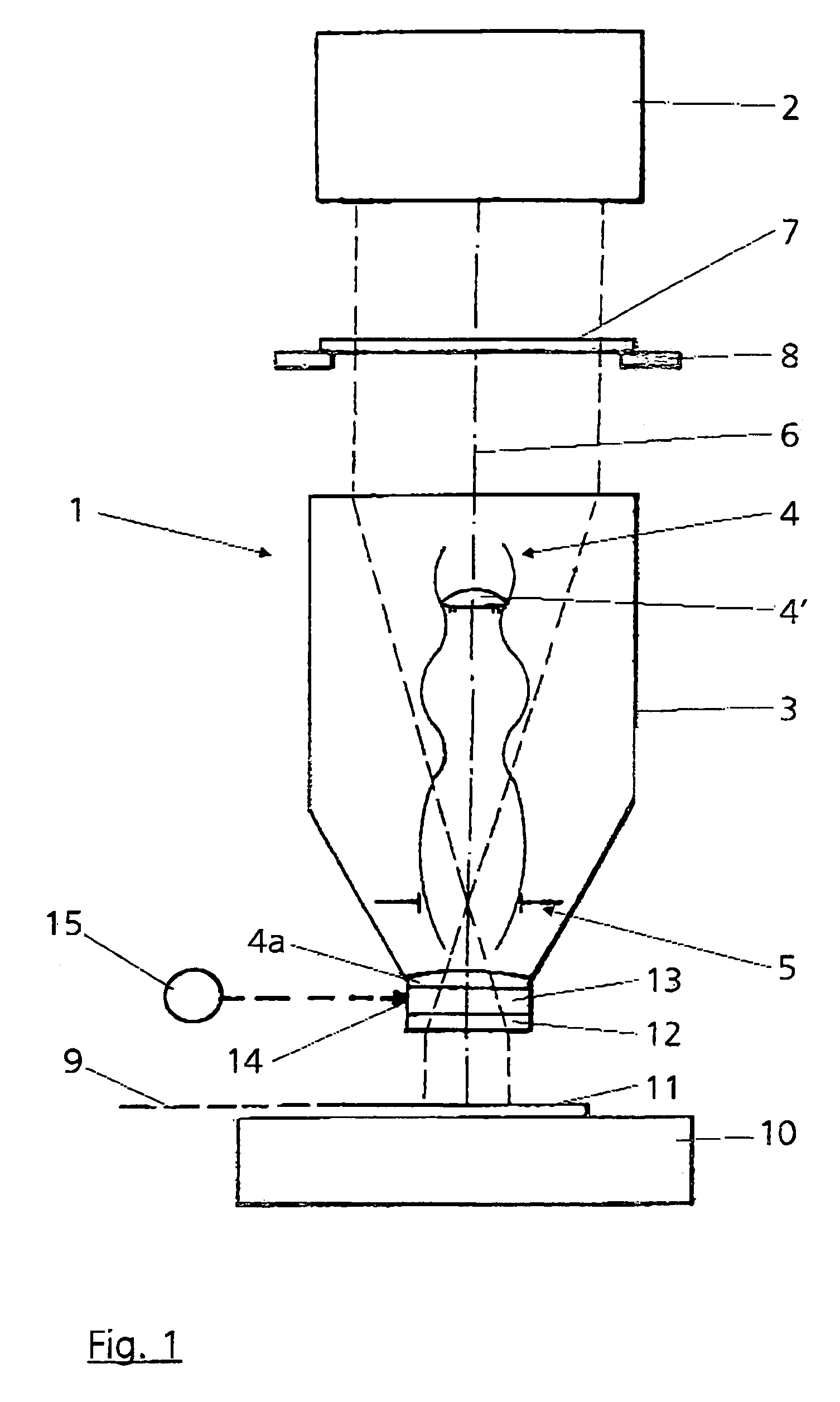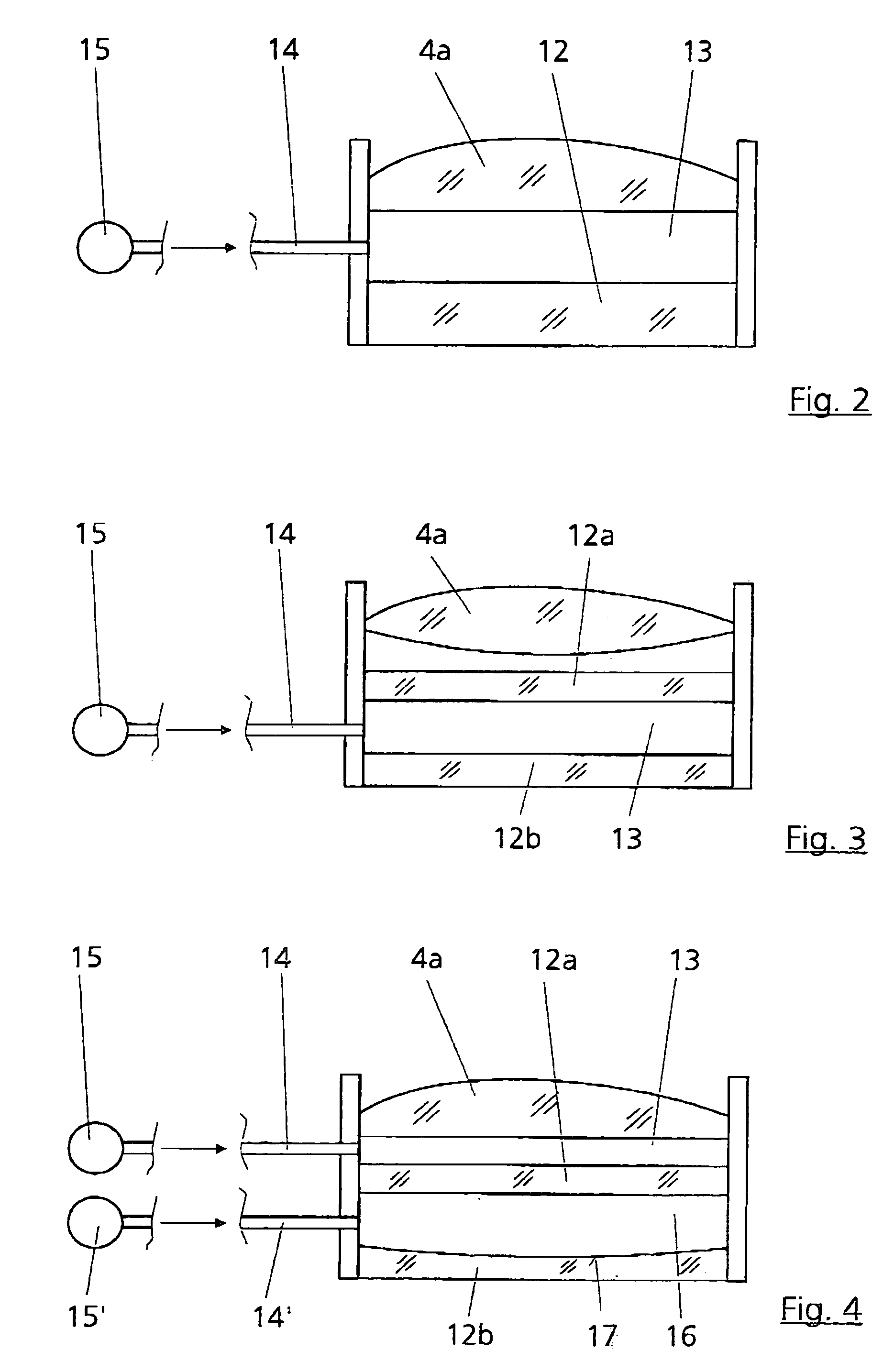Projection exposure machine comprising a projection lens
a technology of projection lens and projection lens, which is applied in the direction of photomechanical equipment, instruments, printers, etc., can solve the problems of large absolute value of spherical aberration, spherical aberration, and inability to tolerate large spherical aberration, and achieve good quality
- Summary
- Abstract
- Description
- Claims
- Application Information
AI Technical Summary
Benefits of technology
Problems solved by technology
Method used
Image
Examples
Embodiment Construction
[0036]The principle of the design of a projection exposure machine 1 is described below with the aid of FIG. 1. The projection exposure machine 1 has an illuminating device 2 and a projection lens 3. The projection lens 3 comprises a lens arrangement 4 with a multiplicity of lenses 4′ (not illustrated in more detail in FIG. 1) and an aperture stop 5. The lenses 4′ are arranged along an optical axis 6. A mask or reticle 7, which is held in the beam path by means of a mask holder 8, is arranged between the illuminating device 2 and the projection lens 3. The mask 7 is imaged on an image plane 9 by means of the projection lens 3 by a clearly reduced factor. Such masks 7 used in microlithography have a micrometer or nanometer structure which is imaged on the image plane 13 by means of the projection lens 3 in a fashion reduced in size down to a factor of 10, in particular the factor 4. The minimum structures which can still be resolved depend on the wavelength λ of the light used for th...
PUM
| Property | Measurement | Unit |
|---|---|---|
| radii | aaaaa | aaaaa |
| refractive index | aaaaa | aaaaa |
| wavelength | aaaaa | aaaaa |
Abstract
Description
Claims
Application Information
 Login to View More
Login to View More - R&D
- Intellectual Property
- Life Sciences
- Materials
- Tech Scout
- Unparalleled Data Quality
- Higher Quality Content
- 60% Fewer Hallucinations
Browse by: Latest US Patents, China's latest patents, Technical Efficacy Thesaurus, Application Domain, Technology Topic, Popular Technical Reports.
© 2025 PatSnap. All rights reserved.Legal|Privacy policy|Modern Slavery Act Transparency Statement|Sitemap|About US| Contact US: help@patsnap.com



